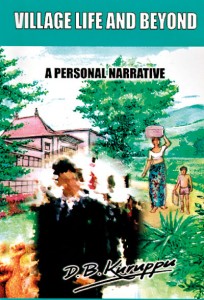Veteran recollects village life of a bygone era
Baldwin Kuruppu has been a prolific writer for the past six decades or so. I remember him writing reviews to the Dinamina in the late 1950s. Presently domiciled in Australia I met him recently at his Melbourne home and had a long chat about the old days and how he spends his retirement. Being proficient in both Sinhala and English he has written over a dozen books in English and many more in Sinhala. He showed me a photograph he treasures – that of the University Sinhala Society committee of which he was president with Vice Chancellor, Sir Ivor Jennings taken at Peradeniya in 1953.
Before I left he gave me a copy of his latest book in English – ‘Village life and beyond’ which he calls “a personal narrative”. He describes himself as the third son of “an ordinary village farmer” where he went through the usual daily routine of any village boy in that time joining his father in the field during harvest time and attending to home chores assigned by his parents.
“My feet bear witness to a strange reality, that they remained untouched by shoes of any kind in their formative years. In fact I was almost 18 when I bought my first pair of shoes a couple of months before I entered Nalanda Vidyalaya, Colombo in January 1946,” he confesses.
Hailing from a village near Horana, he describes rural life vividly bringing back memories of my own young days when there was so much in common in all villages anywhere in Sri Lanka. An example is the village hierarchy, he explains, starting with the headman and moving on to the ‘vidanearachchi’ (VA) who supervised a number of headmen in the surrounding villages. Parallel to him was the Registrar of Births and Deaths, who did not wield any power as such compared to the VA. The ‘velviade’ selected by the owners of paddy land did an honorary job settling disputes over cultivation rights or irrigation matters. The ‘iskolamahattaya’ , the school master was a highly respected person. So was the ‘vedamahattaya’, the village physician. The ‘gas veda’ treated those who fell from trees or fractured their bones while the ‘sarpaveda’ treaed those who were bitten snakes. The ‘kattadiya’ also played a useful role.
He then discusses the early days when there were hardly any facilities for communication with no telephones, no radios (except for one in the temple where the people went and listened to ‘radio bana’), no postal service with only a Receiving Post Office where the village folk had to go and see whether there were any letters, and just one or two ‘kopi kades’. The ‘Dinamina’, the only Sinhala newspaper at the time, would be read aloud by one person while the others listened. People had to walk a fair distance to catch a bus and the mode of village transport was a ‘bakkikaratte’ with goods being taken about in a ‘barabage’.
Talking of the ‘irida pola’ – the place where the farmers took their produce for sale on Sunday, the writer describes his father’s routine: “My father had always cultivated a patch of garden with betel and it was his daily ritual to water it when there was no rain. I do not think anything else got that much of attention from him. When it was time to send some leaves to the fair he would sit with a man from a nearby house and work overnight to select the saleable leaves and arrange them in the necessary pattern, each ‘hand’ consisting of two sets of twenty. The term used to describe the two combined sets is ‘atha’ meaning hand. This may be due to the fact that when someone is offering betel to someone as a mark of respect it has invariably to be two sets put together. It is always handed over respectfully by the giver to the receiver. Thus the practice has developed to arrange even the betel for commercial purposes in the same pattern.”
His easy-going style makes pleasant reading. The sentences are short – so are the chapters. The whole narrative is like watching a documentary film.
As for regular visitors to the village he talks of the Chinaman coming round on the bicycle announcing “his arrival with a sharp cry ‘rejeep’ which is a corrupt pronunciation of the word ‘redi’ meaning textiles. A much more piercing cry with a dragging tone was heard less often. “The ‘mirisgalkotanna’ came from another itinerary craftsman carrying a small bundle on his shoulder. It contained the tools of his craft, a couple of sharp spikes and a hammer to strike with. Using his spikes he sharpened the main stone plus the ‘athgala’ , the hand stone as well.”
The accompanying line drawings at the beginning of each chapter illustrating the relevant topic have been done very cleverly by Wijaya Wickrama Karunaena adding value to the book.
The 38 chapters in the 175-page book is a wealth of information on the Sri Lankan lifestyle most of which has disappeared today but adds up to the culture we boast about. His tales about ‘avurudu’ customs, traditions and games are among the few that remain intact.
The writer’s tone changes in the last few chapters when he gets interested in left politics as a student in a Colombo school and relates some interesting stories of the 1947 general election and thereafter. He ends the book with the early happenings at the Peradeniya campus where he spent his final year.
I enjoyed reading Baldwin’s latest creation. I am sure he will have many in the pipeline.


